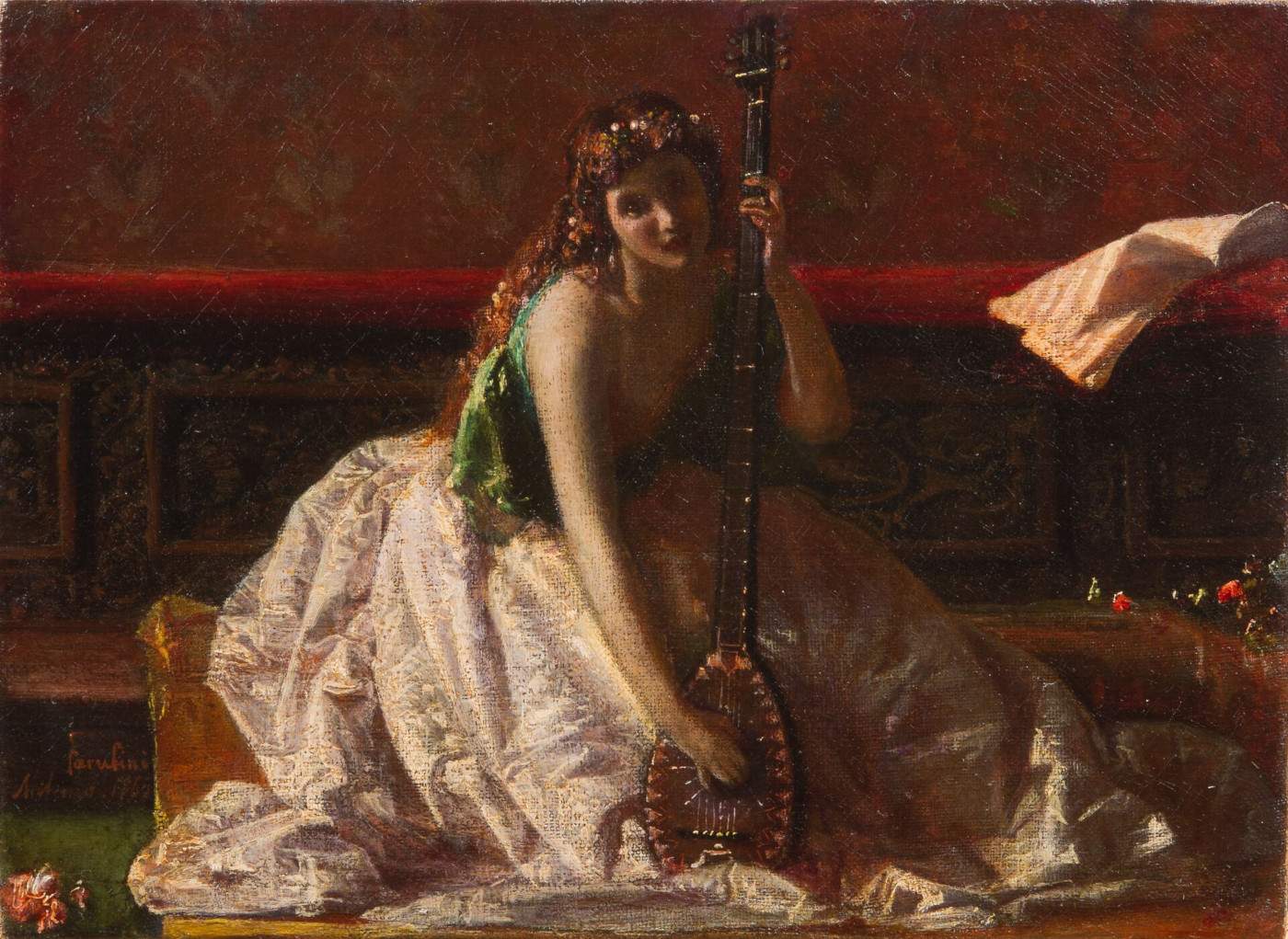L’Orangerie, Reggia di Monza together with the Musei Civici di Monza are preparing to host from April 13 to July 28, 2024 the exhibition 800 Lombardo: Rebellion and Conformism, from Hayez to Previati, curated by Simona Bartolena and produced and realized by ViDi cultural, in collaboration with the Consorzio Villa Reale e Parco di Monza and the Municipality of Monza, with the contribution of BPER Banca, travel partner Trenord. The exhibition aims to offer a journey into the painting and culture of 19th-century Lombardy through nearly one hundred works, including paintings and drawings. The exhibition will explore the rich artistic landscape of19th-century Lombardy, with the aim of highlighting the main protagonists of this period, from Hayez to Piccio, Faruffini to Cremona, Medardo Rosso to Previati and Segantini.
The exhibition, divided into different thematic areas, aims to analyze not only the movements and iconographic trends, but also the lives and personalities of individual artists. Through this exhibition, visitors will thus have the opportunity to immerse themselves in a dynamic, culturally refined and experimental universe, and to explore the society of the time by following a narrative thread that aims to bring to light the Lombard art scene of the 19th century.
Although the focus of the exhibition is on the Milanese milieu and in particular the teaching of the Brera Academy, it also aims to explore the realities of the other Lombard provinces. In the Exhibition Hall of the Civic Museums of Monza, there will be a section devoted to the lively art scene in the city of Monza, home of extraordinary painters such as Pompeo Mariani, Mosé Bianchi, Eugenio Spreafico and Emilio Borsa.
The exhibition opens with the Romantic season, dominated by the figure of Francesco Hayez, whose influence marked entire generations of artists. His long direction at the Brera Academy profoundly influenced the Milanese cultural scene. Along with Hayez’s works, those of artists who followed his teaching will be exhibited, as well as those of his contemporaries such as Giacomo Trecourt, Massimo d’Azeglio and Giuseppe Molteni.
The next section focuses on the vedutists and perspective painters of the first half of the century, such as Giovanni Migliara, Angelo Inganni and Luigi Bisi, whose paintings of urban views and scenes of daily life offer a valuable glimpse into the urban planning and society of the time.
The itinerary continues with the period of the Wars of Independence, presenting paintings centered on Risorgimento themes, with prominent authors such as Gerolamo and Domenico Induno, also known for their genre scenes depicting the lives of the lower classes and elegant and frivolous scenes set in bourgeois salons.
The figure of Giovanni Carnovali, known as il Piccio, introduces the perceptible change of direction in the second half of the century. An artist who anticipated innovative linguistic solutions, Piccio influenced artists such as Federico Faruffini and, above all, Tranquillo Cremona. While the former opened the door to modern interpretations of historicist and literary painting, the latter, together with Daniele Ranzoni and Giuseppe Grandi, founded the Scapigliatura, a movement present in literature as much as in the visual arts, exploring existential doubts and claiming a rebellious vocation through an experimental and modern artistic language that profoundly influenced painting in the following decades.
The exhibition also offers a series of focuses on lesser-known but equally influential artists, such as the aforementioned Piccio and Faruffini, as well as Luigi Conconi.
In the second half of the 19th century, the landscape genre also enjoyed great success, with works depicting the Brianza countryside, Alpine peaks and picturesque lakes, painted by artists such as Eugenio Gignous, Silvio Poma and Filippo Carcano.
The exhibition concludes with a perspective on the early works of Previati and Segantini, just before the birth of Divisionism, when their poetics still approached Scapigliatura, although already sensitive to the atmospheres of Symbolism.
The exhibition is accompanied by a catalog produced by Ponte43 for ViDi cultural editions.
For info: www.reggiadimonza.it
Hours: Orangery, Reggia di Monza: Wednesday through Friday 10 a.m. to 1 p.m. and 2 p.m. to 7 p.m.; Saturday, Sunday and holidays 10 a.m. to 8 p.m. Monza City Museums: April through May Wednesday 10 a.m. to 1 p.m. 3 p.m. to 6 p.m.00; Thursday 3-6 p.m.; Friday, Saturday and Sunday 10 a.m.-1 p.m./ 3-6 p.m.; June through September Wednesday 3-6 p.m.; Thursday 3-6 p.m./ 8-11 p.m.; Friday, Saturday and Sunday 10 a.m.-1 p.m./ 3-6 p.m.
Image: Federico Faruffini, Lute Player (1865; oil on canvas, 26 x 35 cm; private collection)
 |
| An exhibition in Monza on nineteenth-century Lombard painting and culture, from Hayez to Previati |
Warning: the translation into English of the original Italian article was created using automatic tools. We undertake to review all articles, but we do not guarantee the total absence of inaccuracies in the translation due to the program. You can find the original by clicking on the ITA button. If you find any mistake,please contact us.